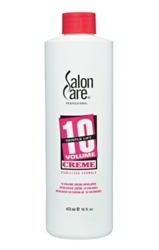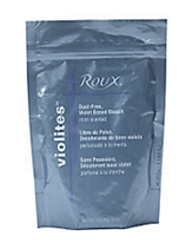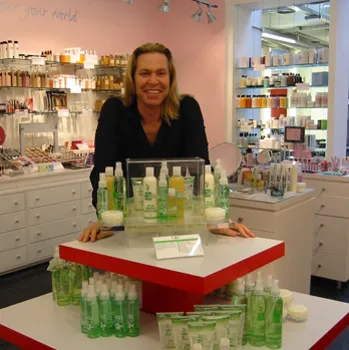
Fame And Curly Hair
Introduction
Hydrogen Peroxide And Hair BleachingHydrogen peroxide used by licensed cosmetologists (not drugstore formulas) plays an important part in altering hair color through bleaching or lightening. Natural hair color depends largely on the type and amount of pigment that is contained in the cortex of the hair. Hair pigment includes melanin which may be black or brown, and pheomelanin which is reddish yellow. Mixtures of these pigments result in different hair colors. Removal of any of these colors is bleaching. This is the chemical reaction which changes the pigments to colorless compounds inside the hair shaft. This process takes place by the addition of oxygen to the pigment and the chemical reaction is called oxidation. Hydrogen peroxide is sometimes referred to as developer, activator or oxidizer or H2O2. Oxidation StagesBlack and brown color pigments are more easily oxidized than red and yellow pigments, so that the oxidation takes place in three stages. 1. Oxidation of black and brown pigments leaving read and yellow. 2. Oxidation of red pigment leaving yellow. 3. Oxidation of yellow pigment.
Oxygen Required For Bleaching
The oxygen required for bleaching is usually obtained from the decomposition of hydrogen peroxide, ammonium hydroxide being added as a catalyst to speed the release of the oxygen. A catalyst is the substance which speeds up a reaction, but remains unchanged itself at the end of the reaction. Hydrogen peroxide, because it supplies oxygen for the reaction is known as an oxidizing agent. Hydrogen peroxide ------------------------------------> oxygen + water Newly formed oxygen or nascent (new born) oxygen is a powerful bleaching agent unlike ordinary atmospheric oxygen. The oxidation process of bleaching is represented by the following equation: Melanin + nascent oxygen --------------------------> oxy-melanin (colored) (from hydrogen peroxide) (colourless) OxidesHydrogen peroxide is one of a series of compounbds called oxides. An oxide is formed by the combination of any single element with oxygen. Element + oxygen -------------------------------> an oxide
Many oxides (though not hydrogen peroxide) are formed by burning elements in oxygen. Acidic oxides are formed if non-metal elements such as carbon or sulphur are burned in oxygen. These oxides produce acids when they dissolve in water. Basic oxides are formed when metal elements such as sodium and calcium are burned in oxygen. If they dissolve in water an alkali (a hydroxide) is produced. Neutral oxides such as water are neither basic nor acidic. If hydrogen is burned in oxygen, water is produced. Each molecule of water contains two atoms of hydrogen and one atom of oxygen, and is represented by the chemical formula H2O. Peroxides such as hydrogen peroxide and magnesium peroxide will give off oxygen on heating, and contain a great proportion of oxygen than other oxides. Each molecule of hydrogen peroxide contains two atoms of hydrogen combined with two atoms of oxygen, and is represented by the formula H2O2. Properties of Hydrogen Peroxide
1. Hydrogen peroxide is a colorless liquid. 2. For salon use, hydrogen peroxide is available in various 'volume strengths' from 10 volume to 100 volume. The volume strength is the number of parts of free oxygen obtainable from one part of the hydrogen peroxide. 1 part of 20 volume hydrogen peroxide gives 20 parts of free oxygen; or 1 ml of 20 volume hydrogen peroxide gives 20 ml of free oxygen, or 1 ml of 100 volume hydrogen peroxide gives 100 ml of free oxygen. The strength of hydrogen peroxide may also be expressed as the percentage of pure hydrogen peroxide in the solution. The percentage strength is the number of grammes of hydrogen peroxide in a hundred grams of solution. Thus a 30 per cent solution contains 30g of hydrogen peroxide, and therefore 70 g of water in 100 g of solution. As 1 ml of 30 per cent solution is equivalent to a 100 volume strength solution. The percentage strength corresponding to other volume strengths are calculated by proportion. 100 volume strength = 30% solution 10 volume strength = 3% solution 20 volume strength = 6% solution 30 volume strength = 9% solution 40 volume strength = 12% solution 60 volume strength = 18% solution The volume strength is measured by a special type of hydrometer (see page 174) called a peroxometer. This is floated in hydrogen peroxide and the volume strength is read directly on the scale at surface level. 3. Hydrogen peroxide is an oxidising agent as it gives oxygen to other substances during chemical reactions. Concentrated hydrogen peroxide may break the polypeptide chains in hair keratin by oxidation so causing breakage of the hair shaft. It also causes skin burns. Forty volume hydrogen peroxide is the strongest solution which can be applied to hair without damage. In hairdressing hydrogen peroxide can be used in the following manner: a - As an oxidixing bleach (20-30 volume for normal bleaching and 40 volume for bleached tips. b - For the oxidation of permanent dyes (10-30 volume) c - As an oxidixing agent in perming (20 volume) 4. Hydrogen peroxide is easily decomposed into water and oxygen by the following: a - Alkalis such as ammonium hydroxide b - Heat from the sun or other heat generators c - Sunlight d - Dust e - Copper, lead or iron compounds f - Organics substances such as blood 5. Acids tend to prevent the decomposition of hydrogen peroxide and are often used stablizers added during manufacture to prevent loss of oxygen during storage. Small quantities of salicylic acid or phosphoric acid are used for this purpose. SummaryAcids tend to prevent the decomposition of hydrogen peroxide and are often used stablizers added during manufacture to prevent loss of oxygen during storage. Small quantities of salicylic acid or phosphoric acid are used for this purpose. - Revised Date: 01/05/12 | ||||||||||||
| If you want to talk more about this or other hair care articles on HairBoutique.com or anywhere else, please post a message on HairBoutique.com's Hair Talk Forums.
|
Social Media Network Information
Please follow us on Twitter at: https://Twitter.com/HairBoutique. I look forward to meeting new people from all walks of Twitter and learning from their Tweets.



















